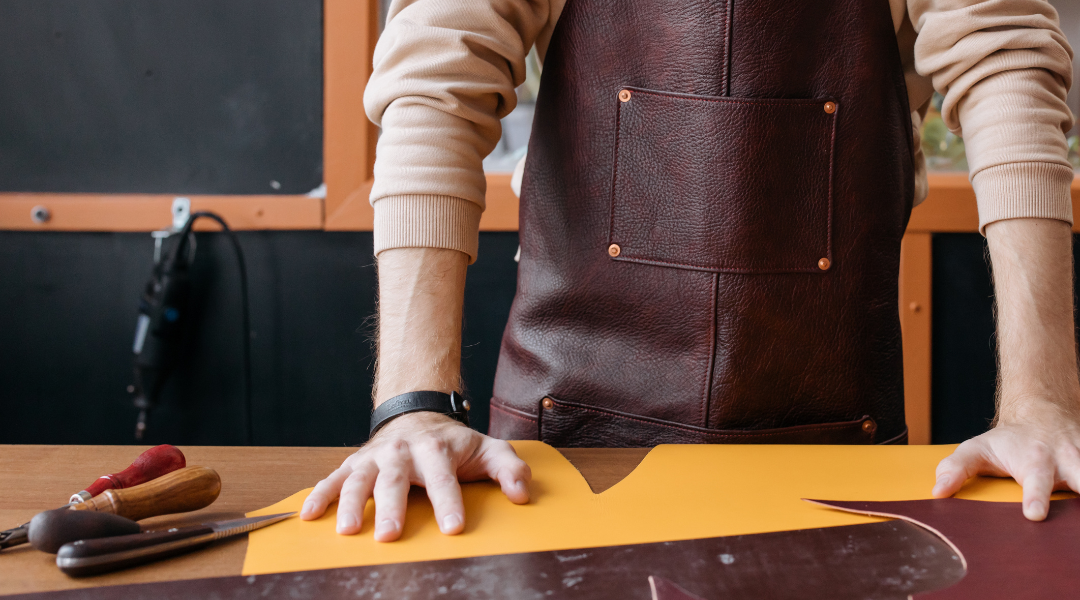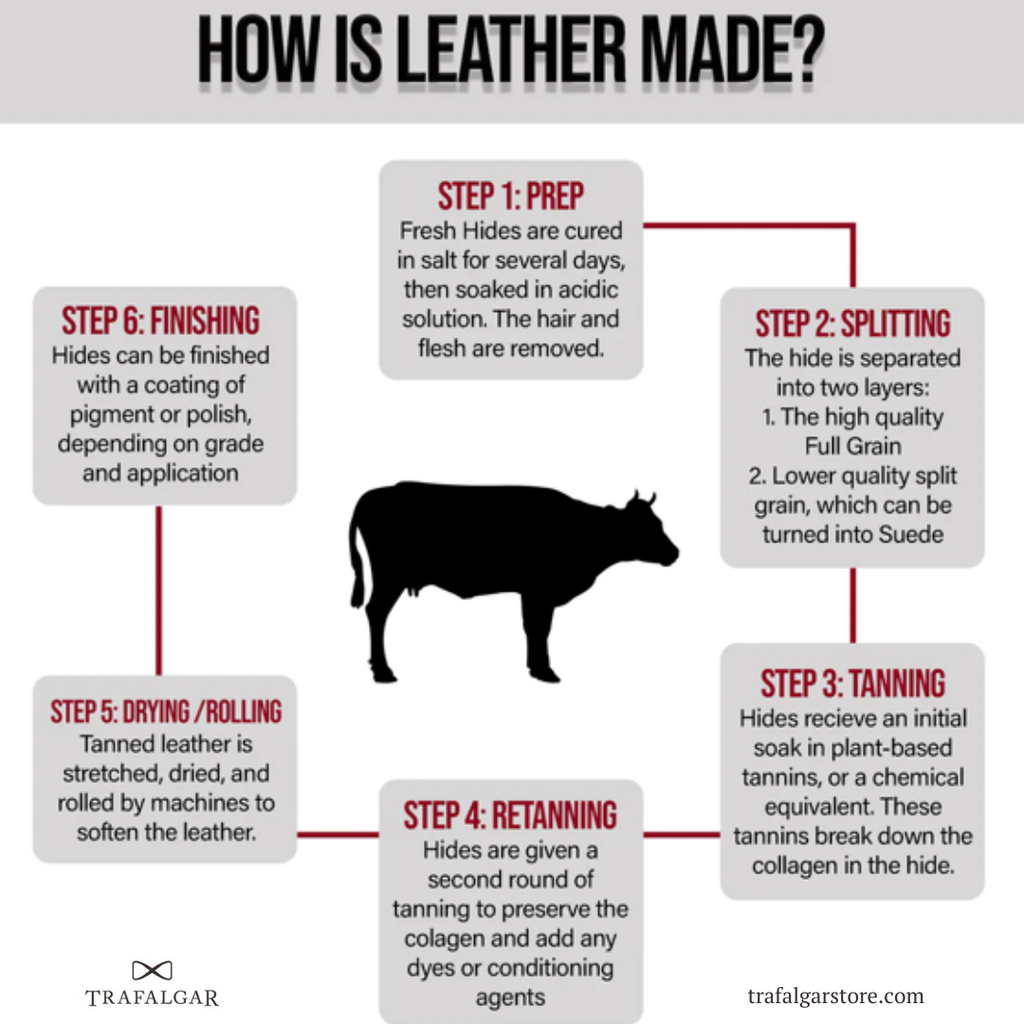
How Is Leather Made?
The art of leather-making can be a lengthy, intricate process in order to turn a fresh hide into beautiful handmade wallets, shoes, belts, or handbags. All animal hides undergo the same basic processes to become leather.
The hide, or skin, is packed in salt to keep it from spoiling in transit between the supplier and the tannery. Packing the hides in salt draws out the moisture, which cures them and prevents decomposition. When the hides are ready to be processed, they are soaked for several days to remove the salt and re-hydrate them.
At this stage, any other remnants of flesh and fur are removed through soaking the hides in a lime solution and scraping away any unwanted material. Liming the hides also helps break down the stiffened collagen, and make the hides more flexible. The hide may repeatedly be moved from acidic to basic solutions over several days, in order to gently further this collagen breakdown. When this process is complete, the hides are ready for tanning.
Tanning is the process of converting an animal’s hide into finished leather. The aim of tanning is to retain the hide’s natural properties, produce a leather that is soft, flexible, and supple when dry, and resistant to rotting when wet.
Animal hides consist of interwoven fibers made from collagen proteins. Tanning stabilizes the structure of collagen fibers, using chemical means to separate the fibers and lubricate them so the resulting leather becomes softer and more pliable. Finished leather is essentially made up of numerous collagen fiber bundles.
Tanning can be achieved by soaking and tumbling hides in different solutions. The two most common types are Vegetable Tanning and Chrome Tanning.

At Trafalgar, the majority of our handmade Italian Leather accessories are Vegetable-Tanned to ensure a high-quality finish. Vegetable tanning produces a firm leather that retains its shape well, and can be made softer by dry milling. This method produces a clean finish and takes embossed patterns nicely.
Vegetable Tanning - The Oldest Form of Tanning
Vegetable tanning is ideal for applications where a firmer and fuller leather is an advantage, such as shoe soles, luggage, and belts. Vegetable-tanned leathers are high-quality, made with natural ingredients, and age well.
Like most other high-end products, vegetable-tanned leathers require special care. It is not resistant to temperature in the same way that chemically tanned leather is, and doesn’t share the same resistance to water staining. The higher price also reflects the longer, slower production time, as it is a process that cannot be rushed, unlike other, mass-produced leathers.
Chrome-Tanning
Chrome-Tanning was invented during World War II, when there was a shortage of vegetable tannins, and new methods had to be created. The most widely-adopted solution was to use Chromium(III).
Today, 85% of leather is Chrome-Tanned.
It is a common misconception that Chrome-Tanning is harmful to the environment. In reality, Chromium(III) is a naturally occurring form of Chromium, with a lower reactivity. Part of this misconception is due to Chrome-Tanned hides can being mass produced with low skill. When heavily finished, it can lack the look of natural leather. Chrome-Tanned leather produces a smooth, flexible grain that is processed much quicker than vegetable tanning. The process can take as little as one day to finish, making it more conducive to mass production than vegetable tanning, and at a much lower cost.
Because of the use of strong chemicals, it is soft, with a great drape. This type of leather is good for garments and shoe uppers, as it is stain resistant and temperature resistant. It can also take on a variety of colors and finishes because it doesn’t rely on natural dyes the way vegetable tanned leather does.
Finishing
Depending on the quality of leather and the desired use, tanned leather hides may receive a coating of pigment to mask any imperfections and make the leather more durable. The best quality leathers only receive a thin top coat. To learn about different leather finishes, click here.
